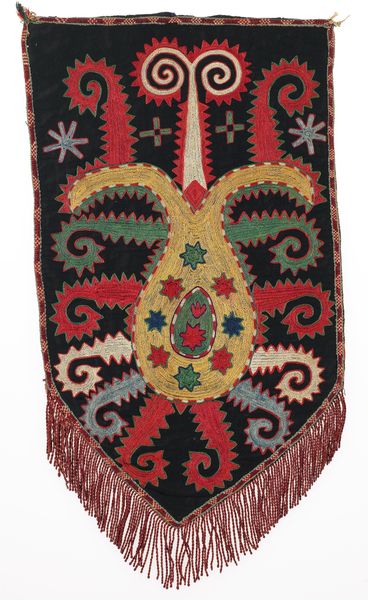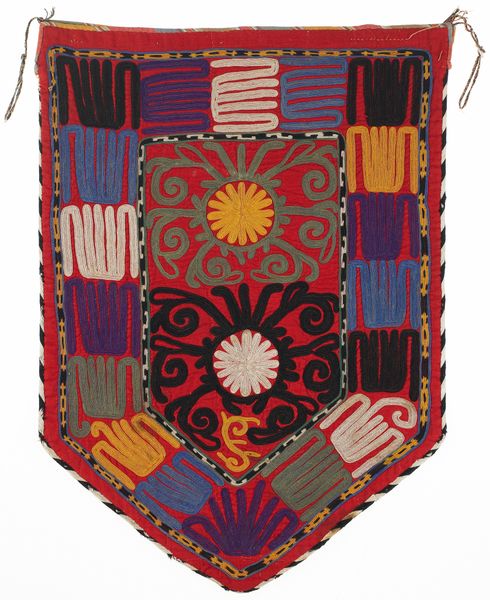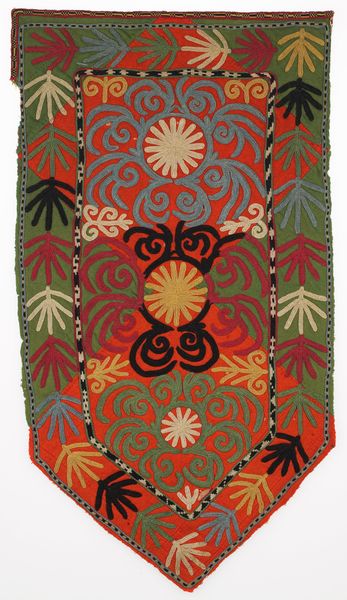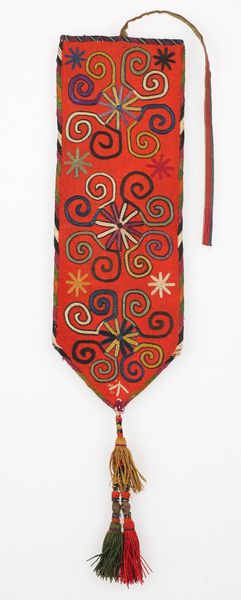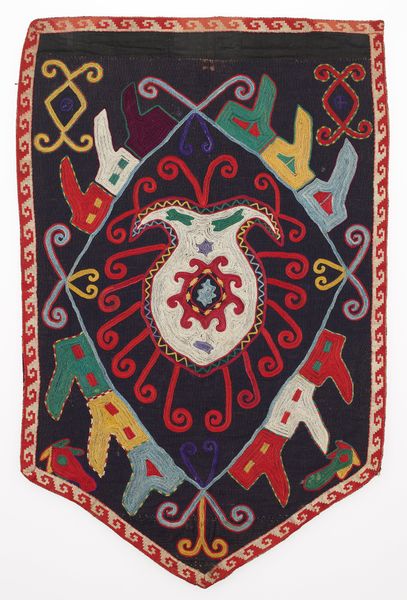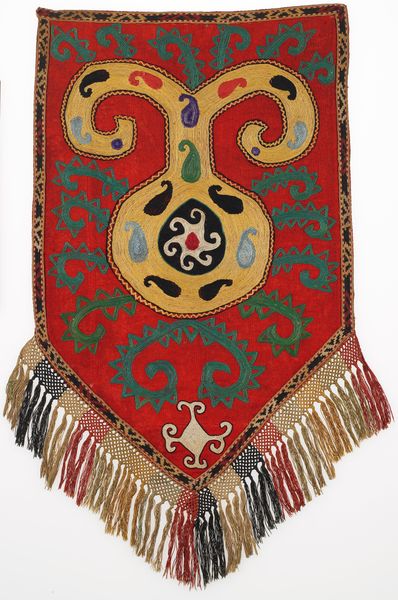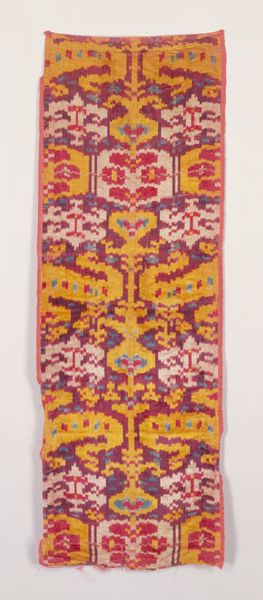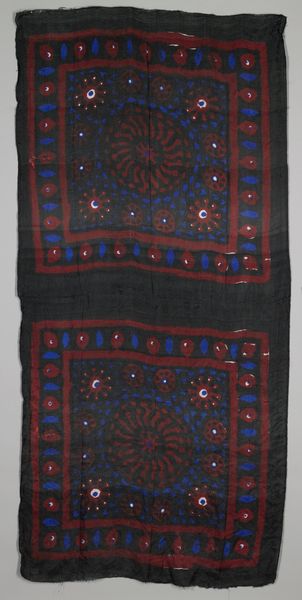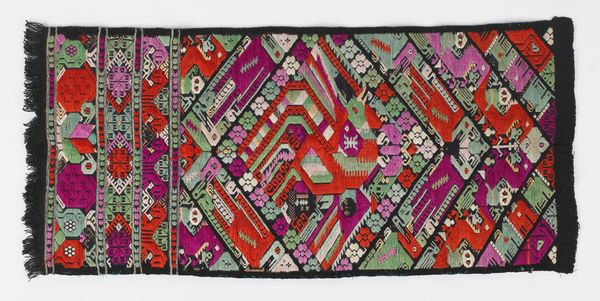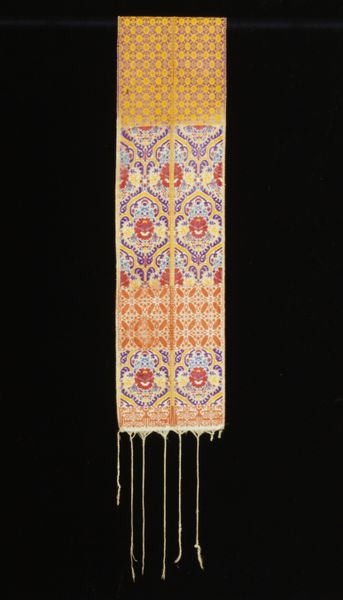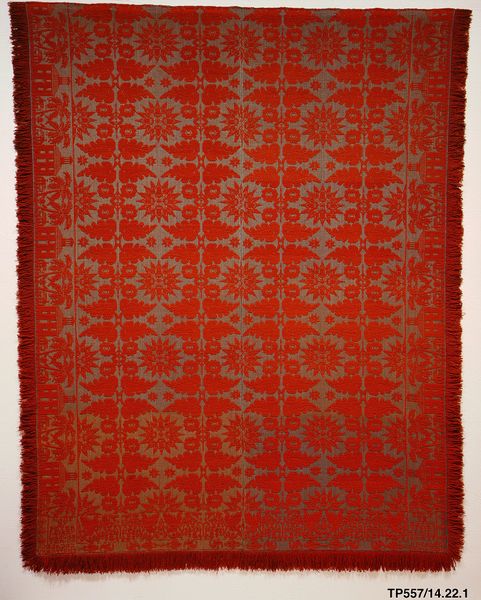
fibre-art, weaving, textile, cotton
#
pattern-and-decoration
#
fibre-art
#
weaving
#
textile
#
geometric pattern
#
geometric
#
cotton
#
islamic-art
#
decorative-art
#
repetitive pattern
Dimensions: 18 1/2 x 6 in. (46.99 x 15.24 cm)
Copyright: Public Domain
Editor: Here we have a striking textile piece, identified as "Kaichidon" dating from the 19th to 20th century. It is crafted from wool, silk, cotton, and other fibres using a weaving technique. I’m drawn to its intricate geometric and floral patterns and vibrant colour palette. What cultural narratives or artistic intentions are embedded in this type of work? Curator: It's great you noticed the vibrant colours! Let’s consider the cultural context. "Kaichidon" originates from the Dasht-i-Kipchak region. Such textiles played a significant role within nomadic and settled communities. These weren't merely decorative items, but crucial indicators of status, family history and even spiritual beliefs. How might the geometric patterns relate to Islamic art traditions of this time? Editor: I notice the repetition of forms and the suggestion of radial symmetry in the floral motifs, does it speak to some concept of unity, or maybe infinity, so common to Islamic art? The use of materials like silk and wool surely speaks to their access to trade routes. Curator: Precisely! The materials tell a story of exchange and influence, right? And the visual vocabulary, while beautiful, was also shaped by political and social forces. Consider how museums in the West began collecting such objects and shaping the Western perception of “oriental” art. To what extent do you think this history influences how we see pieces like the "Kaichidon" today? Editor: I can see how this object enters a wider system, through display and trade and it changes in meaning. It’s not just a traditional object; it becomes part of a narrative imposed by Western institutions and audiences. Curator: Exactly! We can appreciate the craft and skill, but always with a critical awareness of how power and history have shaped its reception. Considering its cultural context opens our eyes to broader political issues embedded within this intricate textile. Editor: Understanding the story behind museum collecting certainly enriches how I will look at similar objects from now on. Thanks.
Comments
No comments
Be the first to comment and join the conversation on the ultimate creative platform.
